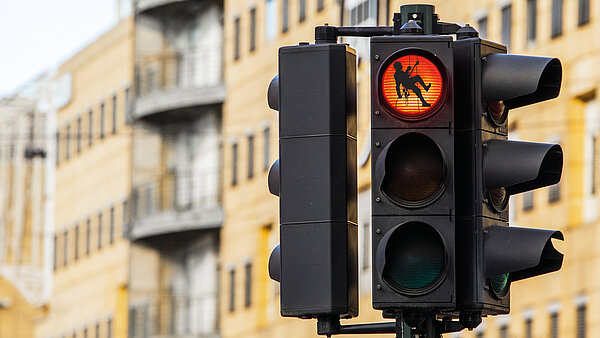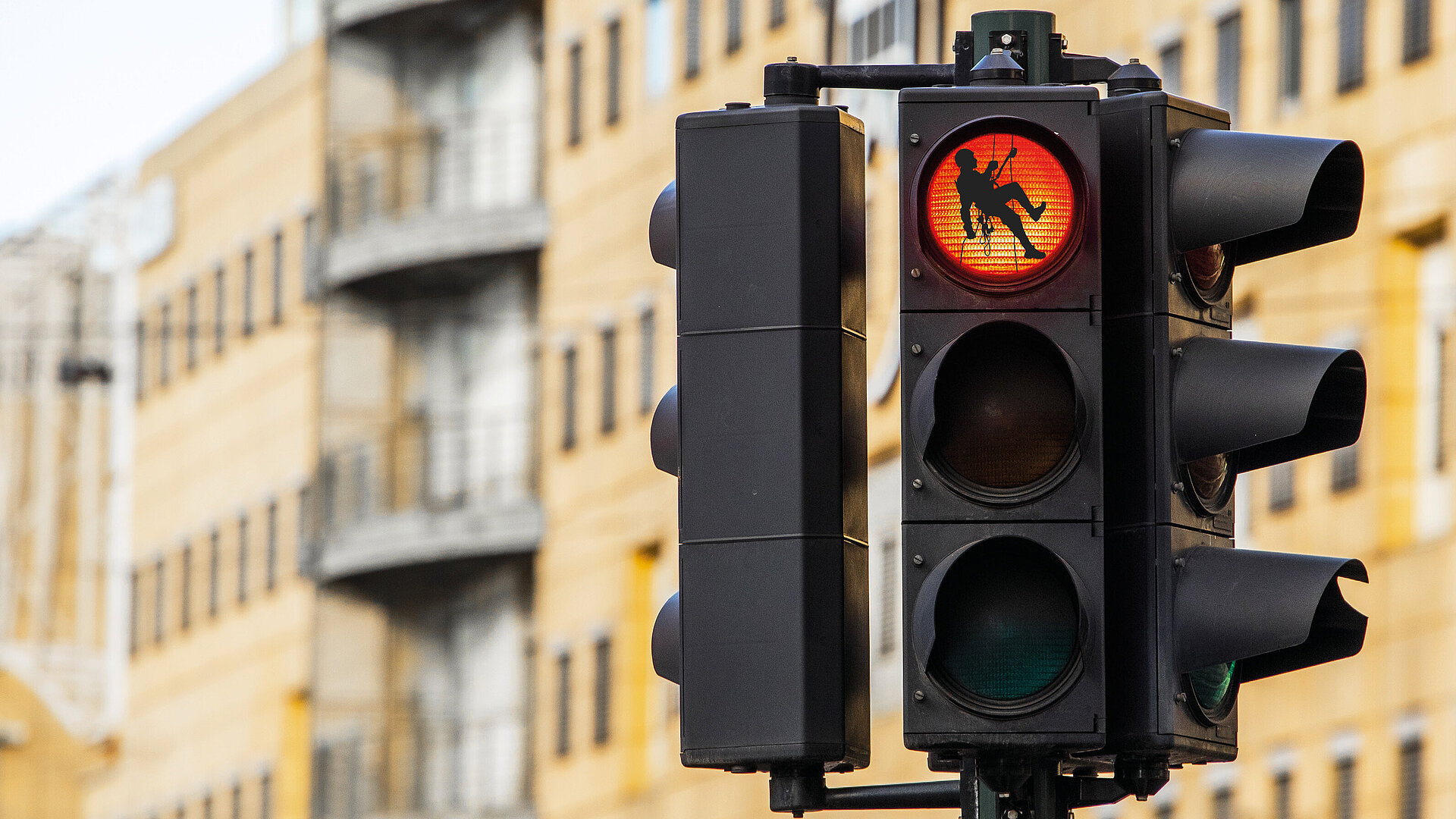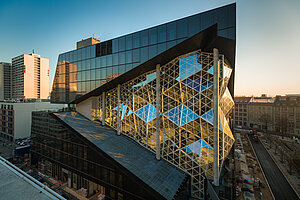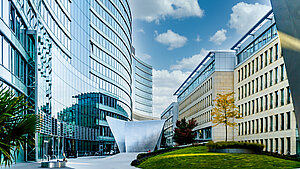Ideally, risks are already eliminated in advance,e.g. by means of correct workflows (Substitution = S in the STOP principle). However, if substitution is not possible, then the TOP principle comes into action. This guiding principle applies both to the selection of suitable fall protection and to rope access technology. Here the correct sequence is of primary importance.
S = Substitution
In terms of industrial safety measures, experts speak of the so-called STOP application principle. The letter S stands for Substitution and means that the risk or hazard which potentially exists is eliminated in advance. However, this rarely applies in practice to fall protection systems or rope access technology, because a safety system would otherwise be unnecessary. For the cleaning, maintenance, and care of facades, ascent/descent or access/egress to/from the fall-risk area must take place. It is therefore not possible to eliminate this situation. That is why we put the S in brackets in the rest of this blog, and for facades we concentrate on the TOP principle.
T = Technical measures
Reduction of a danger by means of technical measures is exactly what the T represents in the TOP principle. For facade safety, this is not at all easy to achieve because, for example, reduction of danger through the application of collective protection to facades is not usually possible. However, a small number of options are available:
- Installation of scaffolding or facade maintenance systems, i.e. working baskets, although their use as an industrial safety measure is heavily dependent on the respective facade type and/or building structure. Thus, for the working basket a cantilever arm is attached to the roof. This arm is moved all round the building and allows the working basket to be lowered. However, this is possible only for flat surfaces.
- Surrounding the building by scaffolding, although this is far from being a satisfactory long-term solution.
Tip from the experts:
For facade safety, you should always bear the illusion of safety in mind. This is caused by incorrect, lacking, or insufficient safety precautions, but also by failure to comply with the sequence of the STOP principle.
The illusion of safety occurs, for example, when an existing safety system, such as rope access technology, is used incorrectly, or where there are anchor points which possess insufficient intrinsic stability and, under usage conditions, are unable to sustain the maximum working load without deformation.
O = Organisational measures
Which risks can be reduced, and how? This is what those responsible for safety concern themselves with for the O, i.e. organisational measures. These include:
- Restricting the number of persons at the exposed location
- Implementation of shift working (although for servicing and cleaning facades, this does not represent a useful solution)
- Instruction of the employees, i.e. anti-fall PPE training or training of experts
- and much more
Tip from the experts:
The certified training for rope access and positioning technology on facades equally forms the basis for working with rope access technology. Relevant specialist associations include FISATand IRATA.
P = Personal safety measures
The P in the TOP principle represents personal safety measures. These refer to actions to protect the employee by means of personal protective equipment, for example. This includes the selection of anti-fall PPE which fulfils the standard, e.g. for the working day in rope access technology. According to the FISAT Rope Access and Positioning Technologies manual, 3rd extended edition, page 5: “The basic equipment must comply with TRBS 2121 (technical regulations for industrial safety) Part 3 (especially regarding rope adjustment devices as per DIN EN 12841:2006) and the FISAT Safety and Working Directive for Rope Access and Positioning Technologies (FRS-SZP).
For example, a recommendation is basic anti-fall PPE equipment consisting of:
- Helmet (DIN EN 12492 or DIN EN 397) (PSA-EQUIP-16)
- Full harness (DIN EN 358, DIN EN 361, and DIN EN 813) (STRING-1-PRO)
- Self-blocking descender device (DIN EN 12841: 2006 Type C) (PSA-EQUIP-7)
- etc.”
B = behaviour-related measures: Extension to the (S)TOP principle
The additional B stands for behaviour-related measures and, in terms of fall protection system on facades, it is an essential extension of the (S)TOP application principle. This area includes corresponding safety instruction before starting the activity, followed by annual additional training, and/or repeat instruction. This instruction transfers not only specialist knowledge, but also motivation. In addition, it defines how the user must conduct himself within the safety system. According to arbeitssicherheit.de prerequisites for safety-appropriate or changed behaviour are:
- know
- can
- want
- may
- must
It is therefore not solely a matter of transferring technical knowledge, but also of acceptance. The behaviour-related measures regarding fall protection on facades with or without rope access technology are governed by law.
Tip from the experts:
You can read more about the STOP principle and the safety measures relating to fall protection in industry in our blog post Legal foundations, liability and standards for fall protection in industry.
Summary: (S)TOP principle on facades
Employers are legally obliged to ensure the safety of their employees. Here, a sustainable safety concept includes not just the appropriate system and the correct equipment, but also organisational, personal, and behaviour-related measures. For this, all participants must know the safety-relevant circumstances, and be made aware of the subject and trained in it. This is the only way that all-round protection can succeed for the cleaning, servicing, and repair of facades.
Would you like to learn more about fall protection on facades? Then download our free White Paper on facade safety.





















